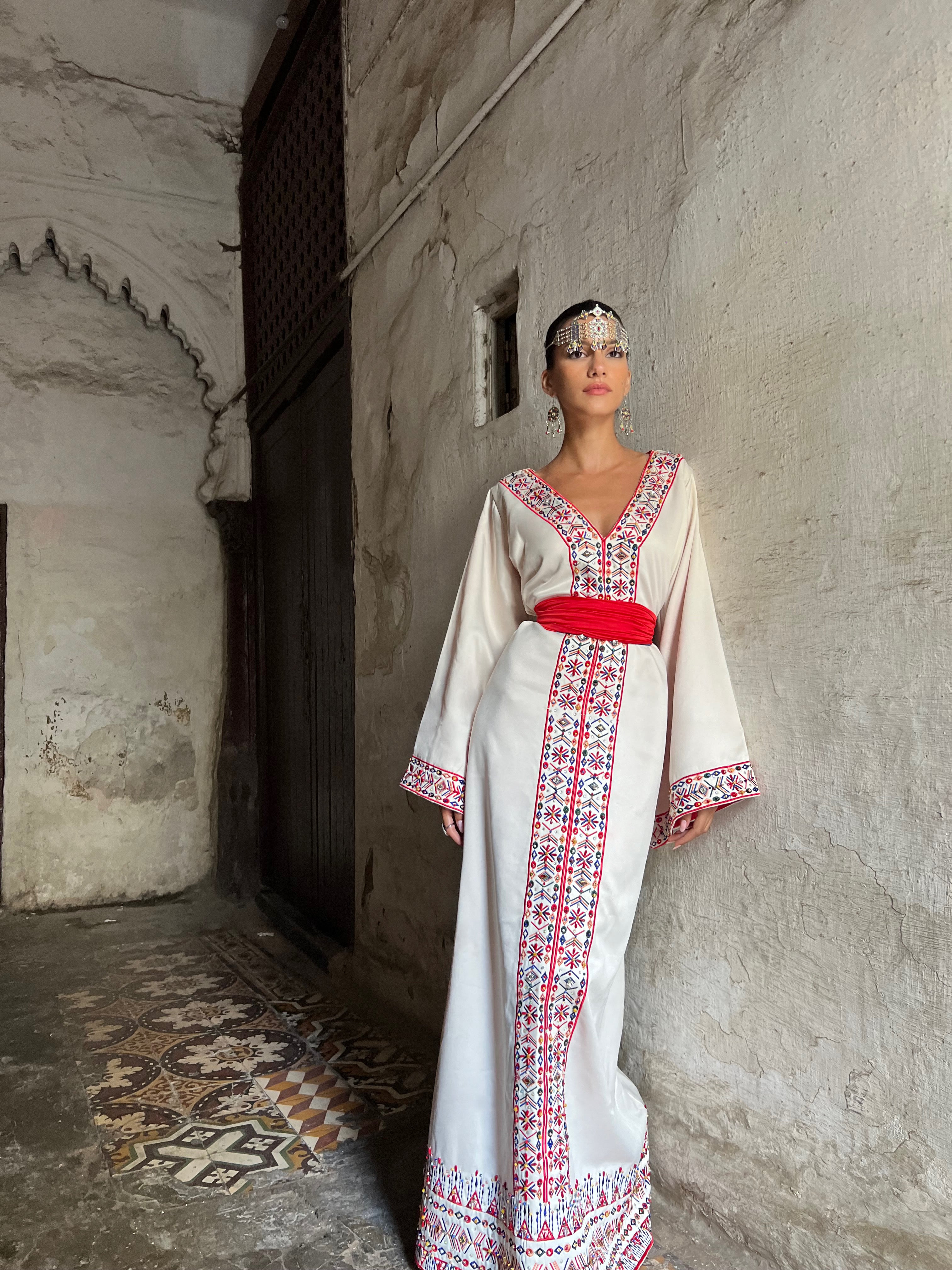The Transition to Modernity
With changing lifestyles and the growing influence of Western fashion, the Kaftan began to transform. Contemporary designers, while respecting the Kaftan's traditional heritage, have introduced more modern cuts, innovative fabrics and bold colors. This blend of tradition and modernity keeps the Kaftan relevant and appealing to a new generation of women.
Today, modern caftans are distinguished by a variety of bright colors and geometric or floral patterns. Designers experiment with light, flowing fabrics, perfect for hot climates, and introduce elements such as asymmetrical sleeves, original necklines and adjustable belts. These innovations create caftans that are both elegant and comfortable, adapted to contemporary tastes.










